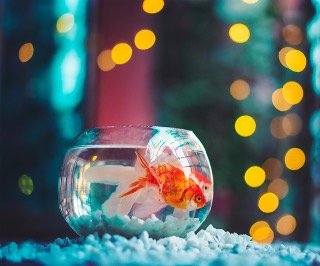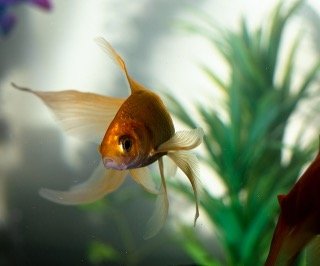
Introduction
Goldfish have a relatively long life expectancy—sometimes more than 30 years! Giving them the healthiest existence possible through careful management of everything from diet to water quality is the key to keeping them alive for the longest amount of time.
Diseases that goldfish may get and we can prevent it.
1 – Ich
Ichthyophthirius multifiliis, a parasite that clings to fish bodies and gives them the appearance of salt grains on their bodies and fins, is the source of this parasitic ailment.
Treatments for ich include prescription drugs, heat therapy, salt therapy, and a few complementary and alternative medicine approaches.
you may also like to read Do Goldfish Need a Filter?
2 – Velvet
Although velvet is a parasite infection that seldom affects goldfish, it does occasionally happen. Due to the fact that it makes your goldfish appear as like it has been dusted with gold or reddish-brown dust, velvet, also known as Gold Dust Disease or Rust, is simple to identify.
Velvet can be effectively treated with antiparasitic drugs like copper. Be aware that invertebrates die when exposed to copper.
3 – Fungus
Fungal infections on fish cause fluffy, white spots that are sometimes referred to as Cotton Wool sickness.
Treatment – Tea tree oil and bay tree oil-based water treatments can be used to treat fungus infections. Some ich medications, including Ich-X, may work well against fungi.
4 -Anchor worms
The unsettling parasites known as anchor worms nibble off the skin of goldfish, causing discomfort and bleeding where they bite, as well as openings for bacterial diseases to enter the skin and bloodstream.
Treatment – Use a pair of tweezers to manually remove any anchor worms you find on your goldfish. If you are able, gently wipe the area with a cotton swab dipped in hydrogen peroxide.
5 – Flukes
The skin and gills of goldfish can become infected by these minute parasites. They cling to the fish and feed on its blood, which causes secondary illnesses and final death.
Flukes can be treated with antiparasitic drugs, but because they are contagious, treatment should begin as soon as you believe you have them.
6 – Fish Lice
With the naked eye, these parasites appear as green, disc-shaped flecks that move around on the fish. The skin of the fish will become red or crimson in severe cases, although the symptoms like flashing and clamped fins are more common.
Treatment – Potassium permanganate and Microbe-Lift are excellent choices for treating fish lice, which can be challenging to eradicate but are typically amenable to the same remedies as anchor worms.
Most of the time, they are resistant to salt treatments.
7 – Chilodonella
This tiny parasite causes tension and irritation when it adheres to goldfish. Chilodonella can remain dormant for a long time, only becoming active when a stressed-out goldfish has a weakened immune system.
Aquarium salt baths or water treatments are the most effective therapies for this condition. In addition to salt, other alternatives include formalin and potassium permanganate.
8 – Trichondia
Although these parasites aren’t harmful to your goldfish, they can cause flashing and rubbing against the substrate or tank decorations because they are so irritating to the skin. The parasite Trichondia does not eat goldfish.
Treatment – Potassium permanganate, salt treatments for the tank, salt baths, and antiparasitic drugs can all be used to treat trichonia.
9 – Open wounds on the skin’s surface are known as ulcers. They are often brought on by microorganisms that profit from weakened immunity.
Improvements in water quality can be made to cure the majority of ulcers and keep the lesion clean while it heals. Antibacterial drugs can be used as a treatment option.
10 – Black Mark
Although it is not a true sickness, this is a sign that the water is highly ammonia-polluted. As ammonia levels drop throughout the fish’s healing process, black patches frequently develop.
Treatment: Even if there might not be a problem, it’s a good idea to check your water’s parameters to make sure your ammonia levels aren’t too high.
Conclusion
Although not an exhaustive list, these are the most common ailments and infections that your goldfish may contract. Your best line of protection against all of these ailments is to maintain high water quality. By placing new plants and animals in quarantine, you can keep your tank secure and catch any ailments your new fish could have early.




